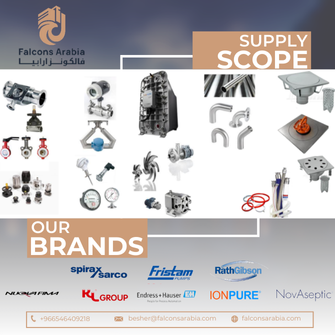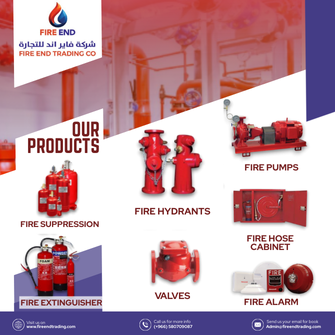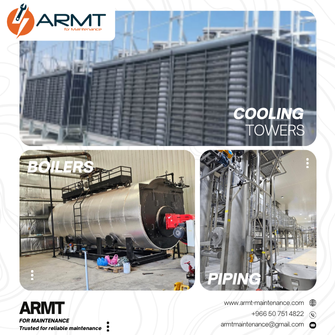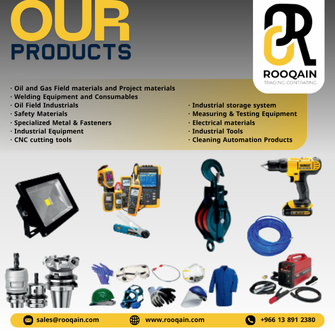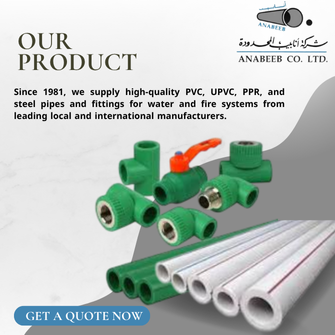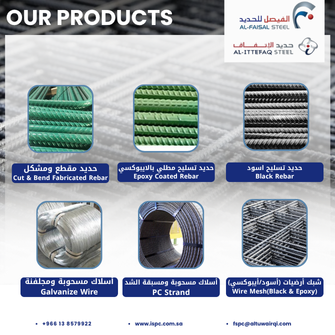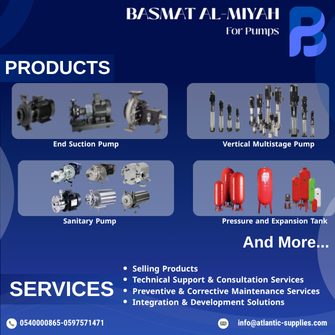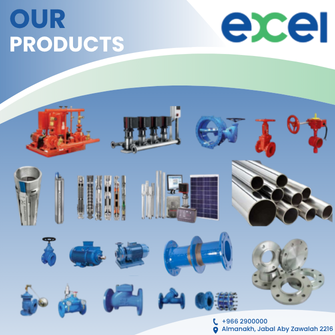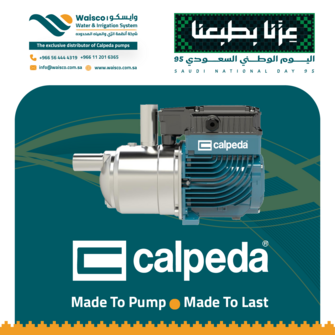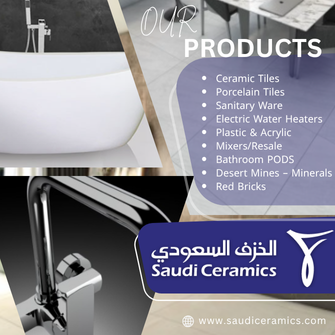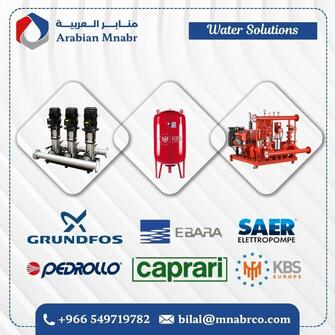advertisement
Gallery
Product Information
Valves are found throughout both household and industrial plumbing. Used to change the flow of water, regulate flow, or shut-off water in the event of an emergency, valves are a valued component of any plumbing system. Valves come in a wide variety of styles, each with a unique design and serving a special function.
What is a valve?
A valve is a type of fitting that allows for regulation, control, and direction of fluids passing through a pipe. Valves are commonly used to direct flow, shut off water access, prevent backflow, and adjust water pressure within a system. Valves allow homeowners to isolate sections of plumbing for repairs, or shut off a water line when a leak sprouts. They are also widely used throughout most commercial and industrial applications. Wastewater treatment centers, pharmaceutical manufacturers, chemical plants, and automobile production all rely on valves for control and direction of fluids and gasses.
Though valves are a type of fitting, they are usually discussed as their own separate, unique category. Each valve operates uniquely, and come in a wide range of styles designed to target specific plumbing needs. Valves are made out of a wide variety of materials, including plastic, lead-free brass, cast iron, stainless steel, and galvanized pipe. This guide is assembled to provide insight into how some of the most common valves work and their distinct advantages and disadvantages.
1. Ball Valve
Ball valves control water flow by using a rotational ball located in the center of the valve. This ball has a hollow core through its center that controls the flow of water. When the ball’s hollow core is parallel to the water inlet, fluids are allowed to flow through the valve and exit out into the pipes. When the hole is rotated perpendicular to the pipe, the passageway is blocked and water cannot pass through the valve. The ball is rotated by a handle located on top of the valve. Giving the handle a 1/4 turn is enough to seal off the flow of fluid. When the handle is parallel to the valve and pipe, so is the hollow core of the ball.
Ball valves are the most commonly used shut-off valve. Popular for their speed, reliability, and durability, ball valves are widely used in residential and industrial applications to turn the water on and off without a pressure drop. The ball creates a powerful, watertight seal within the valve, preventing any fluid from escaping. Due to this tight seal, they’re also common in natural gas and chemical applications. Ball valves are also ideal for emergency applications where water needs to be cut off quickly and with ease.
In general, ball valves have the greatest longevity out of all shut-off valves and are not prone to leaks or premature failure. However, ball valves should only be used to open and close fluid passage. They are not intended to throttle flow, as it risks damaging the seats or the rotational ball and potentially ruining the valve.
The design of ball valves allows them to divert or alter the flow of fluids through multiple ports. These multi-port valves can direct water through as many as four different channels of flow. Most shut-off valves are only designed to control valve in a single direction, further adding to the prevalence and popularity of ball valves.
Advantages of ball valves:
- Simplicity and versatility: Ball valves are low maintenance, compactly designed, and offer reliable, tight seals. Small plastic ball valves can be used under the sink to install a residential water filtration system, while larger, brass ball valves can direct the flow of plumbing for the entire building. Their versatile range of applications and simplicity of operation makes them the most popular valve choice.
- Strength and efficiency: Ball valves are able to withstand high pressure and powerful flow rates without damage. They do not need to be lubricated or maintained like other valves, and they should not require replacement parts if used correctly and with the appropriate fluids.
- Affordability: Ball valves are cheaper than many other valves that serve similar purposes. Their inexpensive price tag adds to their dominance in both residential and industrial plumbing contexts.
Disadvantages of ball valves:
- Unfit for throttling: A ball valve is only effective at isolating water flow. If it is used to throttle fluids or gases, the seat of the ball valve will erode and the valve will fail. If your intended application needs to throttle fluids, you are safer investing in a valve designed for throttling purposes, like a globe valve or a needle valve. Furthermore, closing the valve too quickly can cause water hammer.
- Clogging: If a piece of silt or particulate gets caught in the ball’s core, it can reduce pressure and cause the valve to fail. This generally happens when the valve is being used for fluids it was not intended for, or when it’s handling water with a great deal of sediment. Installing a sediment filter to eliminate dirt and debris is a wise way to avoid this problem.
2. Gate valve
A gate valve is another popularly used shut-off valve. Gate valves are equipped with a wedge-shaped metal gate that can be lowered to halt water flow and raised to allow flow to continue. When the gate is fully drawn up into the valve, it retracts entirely, allowing the water to flow through without any reduction in pressure. Gate valves are controlled by a wheel-shaped knob on top of the valve. Twisting the knob gradually lowers the gate into the valve. One of the benefits of gate valves is this gradual restriction of flow, preventing water hammer. Water hammer is the result of water being forced to suddenly change direction or stop, causing a resounding banging noise within the pipe. When rushing water is met with an abrupt shut-off valve, water hammering frequently occurs. Since the gate incrementally opens and closes, water pressure is progressively reduced, avoiding these pressure waves.
Like ball valves, gate valves should only be used to open or close the flow of fluids. Using them to throttle pressure will result in damage to the gate and will reduce the efficiency of the valve over time. Gate valves are best used in straight lines of flow, with minimal restrictions and diversions, like larger water supply lines.
In general, gate valves tend to be found in older plumbing systems. Ball valves are generally considered superior choices, as gate valves erode over time and are more prone to corrosion and failure. Their handwheel knobs also can present a problem, as it can be difficult to adjust the gate valve in tight and enclosed spaces. Gate valves will last longer if they are only used infrequently. For applications where the flow of fluids needs to be turned on and off regularly, a ball valve is a much stronger choice.
Advantages of gate valves:
- Low resistance: The design of a gate valve is simple, allowing water to pass straight through. Since the gate retracts entirely into the body of the valve, the flow of the fluids is in no way impeded by the design of the valve.
- Prevents water hammer: Since gate valves open and close slowly, water pressure is allowed to modify as the flow is either being restricted or released. This avoids the banging sound of water hammer and protects your pipes.
Disadvantages of gate valves:
- Wear and tear: Gate valves are prone to damage. The seat of the valve can become scratched, weakening the valve’s seal. If used to throttle fluids, the gate will become worn and the valve’s efficiency will become significantly reduced.
- Slow operation: Manually raising and lowering the gate is time-consuming. Where ball valves operate with the swift turn of a handle, gate valves must be hand-operated to open and close. Especially in emergency situations, this extra time can be costly.
3. Globe valve
Globe valves are used to open, close, and regulate the flow of fluids. Unlike ball valves and gate valves, globe valves are designed to modulate and throttle water flow. The spherical valve of the body (hence the name “globe”) houses a stationary ring seat. When the handwheel knob is turned, a revolving disc-shaped device is released from the ring seat and spins upward, opening up a Z-shaped passage and allowing water flow from one chamber into another. The handle can be opened all the way up, sealed closed, or partially opened to allow for throttled flow and reduced water pressure. In this capacity, they function similar to a kitchen faucet or outdoor hose bib.
Globe valves can be used for isolation, like a ball valve or a gate valve. However, globe valves demonstrate a greater pressure drop than traditional shut-off valves. The curved Z-shaped interior of the valve is more flow restrictive than the designs of ball valves and gate valves, so they are best when handling fluids or steams at lower pressures. But, since globe valves close and open relatively slowly, they can be used to avoid water hammer. They also are not prone to leaking when handling low pressures.
Advantages of a globe valve:
- Reliable throttle: Unlike ball valves and gate valves, globe valves are designed to throttle fluids passing through it. In applications where flow needs constant regulation, globe valves are widely used. In addition to its throttling capabilities, globe valves can be used for shut-off and isolation.
Disadvantages of a globe valve:
- High pressure drop: Globe valves have higher pressure drops in comparison to other valves. This is because when fluids must change direction when passing through a globe valve, resulting in greater resistance against the flow.
- Flow restriction: The unique curvature design of the globe valve makes it effective for shut-off and throttling capacity, but consequentially, the flow will be regulated even when the valve is fully opened.
4. Butterfly Valve
A butterfly valve is another shut-off valve commonly used both to isolate and regulate water flow. At the center of a butterfly valve is a rotating disc. Like ball valves, this movable element is controlled by the quarter-turn of a handle. When the handle is turned, this disc flares open, allowing fluid to pass through the pipe. When the disc is closed, it prohibits the movement of any fluids. Butterfly valves, along with ball valves and plug valves, fall into the “rotary motion” family of valves. This is because they control flow by utilizing a revolving mechanism that initiates the closure of flow.
A butterfly valve can be opened incrementally to throttle fluids, though it is less effective at this task compared to globe valves. Some butterfly valves are designed to lock into place with the disc only partially open to preserve the throttled position, but it is not recommended to use a butterfly valve to throttle fluid for extended periods of time. Constant exposure to rushing water will erode the disc element and weaken the watertight seal.
Butterfly valves can be found in household plumbing, but are more commonly found in industrial plumbing. They are lightweight and compact, taking up minimal space and easily manually operated. This makes them ideal candidates for controlling large volumes of water and gas. Many municipal water treatment plants use butterfly valves on their supply lines, as do many plants processing wastewater, sewage, and slurries.
When a butterfly valve is opened, a pressure drop is inevitable. Water is forced to flow around the rotational disc when it is in the on position. There is always an obstruction present in the pipeline when the valve is open, which imposes some limitations on where butterfly valves can be used. However, since the disc pivots on an axis, they are easier to manually open and close against oncoming water pressure than other valves.
Advantages of a butterfly valve:
- Ease of operation: Butterfly valves take up far less space than most valves, especially valves designed for industrial use. Their straightforward design is compact, easily installed, and smoothly operated. Their convenience and simplicity make them popular industrial choices.
- Low cost: Butterfly valves are generally far cheaper than other valves that serve similar functions (like gate valves). Butterfly valves are easier to manufacture and require less material to construct, making them some of the most cost-efficient valves on the market.
Disadvantages of a butterfly valve:
- Pressure drop: The design of butterfly valves does limit their range of application. Pressure drop is unavoidable because the central disc always remains in the flow line of the valve. To modify the pressure difference, a bypass valve may need to be installed to divert some of the flow and preserve water pressure.
5. Needle valve
Needle valves allow for precise control of water flow by the raising and lowering of a threaded, conical spindle. The sharp tip of this spindle seals perfectly within a valve seat at the bottom of the valve. Needle valves are controlled by a rotating stem. As the stem is turned, the spindle slowly swivels out of its valve seat and water is incrementally allowed through the narrow passage within the valve. Needle valves are used for isolation, regulation, and throttle of liquids and gases.
Needle valves offer flow control with precision unlike any other valve. With each turn of the stem, there is only a minimal increase in flow. This allows the operator exact control over the flow of the fluid or gas. Needle valves are commonly found in applications where flow needs to be adjusted with great care, either to protect equipment or to carefully measure flow. Needle valves are ideal for applications where the fluid needs to be shut off gradually, or a very low flow rate is desired. Despite the small size of the water inlet and internal spindle, needle valves are capable of withstanding very high pressures.
Needle valves are very commonly found in car engine carburetors. If the fuel is not carefully controlled, the engine can flood and the motor will be destroyed. Conversely, a deprivation of fuel will cause the engine to overwork at reduced efficiency. Over time, this too will destroy an engine. A needle valve allows for precise regulation of the fuel entering into the carburetor. Needle valves are also commonly used to measure the consumption of water or gas. Since the valve stays so finely tuned, the delivery of fluid or gas is consistent and therefore easily measured.
Advantages of a needle valve:
- Absolute precision: The needle valve’s claim to fame is its remarkably precise control over flow rates. No other valve is designed to so minutely control the amount of fluid allowed to pass through the valve. When precision and meticulous flow rate control are demanded, a needle valve is an obvious choice.
- Efficiency and adaptability: A needle valve is able to adapt to almost any low flow application and provide you with precisely the flow rate desired. Since they control flow so exactly, they can prevent the generation of waste. This versatility and efficiency makes needle valves popular across a wide range of industries, from biofuels and pharmaceuticals to wastewater treatment and food processing.
Disadvantages of a needle valve:
- Low flow: The passageway for fluids and gas within the needle valve is very limited, which can be further reduced depending on the position of the internal flow-regulating needle. By design, needle valves can only be used in low flow applications.
- No visual cues: It can be difficult to assess visually to what extent a needle valve is open or closed. Since every turn of the stem raises the internal spindle incrementally, simply looking at the valve offers no illumination on how open the valve is. As with all things regarding a needle valve, careful precision is paramount.
6. Check Valve
A check valve ensures that water is only permitted to flow in one direction. Check valves are a form of backflow prevention. They prevent contaminated water and sewage from drain lines from flowing back into plumbing and polluting clean water. Check valves regulate water flow exclusively in a single direction. Regardless of any drop in pressure or reversal of flow, check valves ensure water is only granted access to a singular direction of flow.
Backflow is often the result of changing water pressures. In plumbing terminology, the point where wastewater could potentially pollute potable water is known as a cross-connection. Cross-connections need a protective fitting, like a check valve, installed to prevent this alteration of pressure from forcing wastewater back into faucets, dishwashers, water main lines, or pumps.
Check valves are found in many households. If you own a sump pump, you likely have a check valve installed on the discharge line to prevent the floodwater being pumped out the basement from re-entering your home. They are also often found on electric well pumps, ensuring that even in the event of power failure water won’t cascade back down into the well.
How do check valves work?
Check valves work by using a pressure-controlled disc that allows water to flow through from a single direction. When pressure from the incoming water is exerted on the disc, the disc opens up and water flows through. The disc then returns to the seal. In the event of flow reversal, the contaminated water is blockaded by this seal. Sometimes these discs are spring-loaded, adding further protection from backflow. Regardless of the pressure, the water cannot force open the disc and it will return to the drain.
Check valves are one of the few valves that are fully automated and do not require any manual interaction to function. There is no stem or handle to turn to open up the passageway. They do not need to be closed or opened to regulate flow. In the event of a power outage, they will continue to protect wastewater from entering the main water line. They also only serve a single purpose. Check valves exclusively direct water flow by preventing backflow, they do not throttle or regulate pressure. They also do not prevent water hammer, though they offer some shock absorbance when placed downstream from a pump.
Since the movable elements of check valves are always in the line of water flow, it is vital to select a valve that can appropriately handle the water flow. Ideally, the disc should always be stabilized either in the fully open position or tightly shut. When the check valve’s disc flutters open and shut, wear and tear is placed on the valve and will cause the valve to weaken and ultimately require replacement.
Advantages of a check valve:
- Backflow prevention: Check valves are excellent protection against waste re-entering water lines and contaminating potable water supplies. Check valves ensure water flow remains in a single direction, without sacrificing line pressure. Much like needle valves, the biggest draw is a check valve is the function it was designed for.
- Automatic operation: Check valves do not require any manual assistance to function. They are fully automatic and do not need the aid of electricity. That means, if your power goes out and your back-up sump pump kicks on, the check valve will be able to prevent backflow without any physical involvement from you.
Disadvantages of a check valve:
- Requires steady flow: A check valve is not effective with irregular or pulsating flows. The constant opening and closing of the disc will batter the movable elements of the valve, leading to diminished efficiency and will culminate in the valve failing.
7. Plug valve
A plug valve is a cylindrical valve that can be used for isolation or redirection of flow. Within the plug valve is a cone-shaped “plug”. Similar to a ball valve, the plug valve is bored through the center. When the handle is turned a quarter, the plug rotates to face the oncoming flow of water and allow passage. When it is closed, the hollow center turns flush to the walls of the valve and all flow through the valve is blocked. Plug valves can also possess multiple ports and be used to divert flow across multiple channels.
Plug valves are used as airtight shut-off valves. They can not only handle fluids, but also act as shut-off valves for air and gas applications as well. Plug valves are very simple in their design and can be opened by a mere quarter degree turn of a handle. Plug valves are similar in operation to ball valves, and their design was an early forerunner of the ball valve. Though they are no longer as common, plug valves are a suitable substitution for a ball valve
Plug valves can be “full port”, meaning they can allow full flow of the fluid through the valve, or they can be designed with smaller cores. This will provide resistance to the flow and allow for the flow to be restricted. Plug valves tend to have either rectangular ports, diamond ports, or round ports. Round ports and rectangular ports are used for unimpeded flow, whereas diamond ports are used to restrict flow. However, plug valves should never be used to throttle flow.
Advantages of a plug valve:
- Ease of maintenance: Maintenance of a plug valve can be done at the place of operation without shutting down the entire line. Ball valves, on the other hand, require complete removal to replace or repair parts. The ability to perform inline maintenance gives a boost in popularity in large-scale industrial environments.
- High reliability: A plug valve is reliable, durable, and long-lasting valve. Compared to handwheel-operated valves like gate valves and globe valves, plug valves offer leaktight seals with clear visual indicators of the valves position. The diversity of ports also make the valve a versatile choice.
Disadvantages of a plug valve:
- Expensive: Generally speaking, plug valves are a great deal more expensive than ball valves. They tend to be made for industrial purposes and are larger in scale. For any given size or class, a plug valve will tend to be more expensive than a ball valve.
- Difficult operation: The high friction created by rotating the plug valve makes it considerably more difficult to open and close than a ball valve.
Looking for new opportunities in the Saudi market?
Receiving real RFQs is the key for new orders.
Here in Project Suppliers platform we gain you the new opportunity.



